The Home Run Derby is an annual Major League Baseball (MLB) competition held the day before the All-Star Game, usually on a Monday in July. Unlike regular games, batters in the Derby hit pitches thrown slowly and at close range by a coach, aiming to hit home runs without facing defensive players. After hitting, batters don't run bases. Notably, Julio Rodríguez holds the single-round record with 41 home runs, achieved in 2023, surpassing Vladimir Guerrero's 2019 record of 40.
1960: Home Run Derby TV Series Premieres
The inspiration for the Home Run Derby came from a TV series of the same name which aired in 1960. The show featured baseball legends and awarded prize money to the winner.
1985: Inaugural Derby Features Ten Players
The first Home Run Derby, held in 1985, included ten players, with five representing each league.
1986: Reduced Number of Participants in 1986
The 1986 Home Run Derby saw a reduction in the number of participants, with three players from each league.
1987: Further Reduction in Participants
The 1987 Home Run Derby had even fewer participants than the previous year, with only two players from each league.
July 11, 1988: Rain Cancels Home Run Derby and Skills Competition
On July 11, 1988, the day before the scheduled Major League Baseball All-Star Game in Cincinnati, a planned Home Run Derby and skills competition were unfortunately canceled due to rain. TBS had intended to televise these events during their coverage of the All-Star Gala, with Larry King hosting alongside Craig Sager and Pete Van Wieren.
1991: Home Run Derby Format and Broadcast Changes
Before 1991, the Home Run Derby was not televised and had a different format. The competition became a three-round event, a significant change from its previous two-inning structure.
1991: Three-Round Format Introduced
The Home Run Derby adopted a three-round format in 1991, where 8-10 players aimed to hit as many home runs as possible within 10 outs per round.
1993: First National Telecast of Home Run Derby
The Home Run Derby was televised nationally for the first time in 1993, marking a significant milestone for the event. ESPN aired the competition on a same-day delayed basis, bringing the excitement of the derby to a wider audience.
1996: Expansion of the Player Field
The Home Run Derby field was expanded to ten players in 1996, with five representing each league.
1997: Uneven League Representation
In 1997, there was an uneven representation of leagues in the Home Run Derby, with the American League having six contestants and the National League having four.
1998: Ken Griffey Jr. Initially Declines, Then Wins
In 1998, Ken Griffey Jr. initially declined to participate in the Home Run Derby due in part to scheduling conflicts with his team, the Seattle Mariners, who were set to play a late Sunday game the night before the event. However, after conversations with ESPN's Joe Morgan and Hall of Famer Frank Robinson, Griffey had a change of heart and decided to compete. He went on to win the Derby at Coors Field, highlighting the growing pressure on players to participate in the increasingly popular event.
1998: First Live Telecast of Home Run Derby
In 1998, the Home Run Derby was broadcast live on television for the first time, further increasing its visibility and popularity among baseball fans. Chris Berman's energetic commentary, including his iconic catchphrase "Back back back...Gone!," became synonymous with the event. Despite a scheduled two-hour broadcast slot, the derby consistently ran longer, often exceeding three hours in length.
2000: Introduction of "Match Play" Format
A "match play" format was used for the second round of the Home Run Derby in 2000. This format involved pairings based on first-round performance.
2000: Return to Four-Player Format
The Home Run Derby reverted to having four players per league in 2000, a format that remains largely consistent.
2003: Discontinuation of "Match Play" Format
The "match play" format for the Home Run Derby's second round, used since 2000, was discontinued after the 2003 competition.
2005: Bobby Abreu's Record-Breaking Performance
Bobby Abreu won the 2005 Home Run Derby with a then-record 41 homers, including 24 in the first round, which was also a record at the time.
2005: Players Represent Home Countries
In a unique format change for the 2005 Home Run Derby, players represented their home countries instead of their MLB leagues, likely to promote the upcoming World Baseball Classic.
2005: Introduction of the Gold Ball and Charitable Donations
The Home Run Derby in 2005 saw the debut of the "gold ball," used once a player reached nine outs, later changed to six outs in 2014, and finally to the last minute of regulation time from 2015 onwards. Home runs hit with the gold ball triggered a $21,000 donation by Century 21 Real Estate and Major League Baseball to charities such as the Boys and Girls Clubs of America and Easter Seals. The concept of using special balls for charitable donations continued with State Farm in subsequent years.
2005: International Players Compete
To honor the World Baseball Classic, the 2005 Home Run Derby featured eight players representing different countries, maintaining the three-round format with 10 outs per round.
March 2006: World Baseball Classic Impacts Derby Selection
The 2005 Home Run Derby selection criteria were changed to promote the World Baseball Classic, leading players to represent their home countries instead of their MLB leagues.
2006: Gold Ball Home Runs Raise Funds for Charity
In 2006, like the previous year, a total of $294,000 was raised for charities thanks to the "gold ball" initiative in the Home Run Derby. This amount translated to 14 home runs being hit with the gold ball throughout the event, resulting in donations from Century 21 Real Estate and Major League Baseball.
2006: Cumulative Scoring Introduced
In a format change, the 2006 Home Run Derby saw the introduction of cumulative scoring for the first two rounds. Only before the final round was the home run tally reset.
2006: Last Year of Resetting Tally
Until 2006, the Home Run Derby reset the home run tally for each round, meaning players started fresh in each stage of the competition.
2007: State Farm Takes Over Gold Ball Sponsorship
State Farm stepped in as the new sponsor for the "gold ball" initiative during the 2007 Home Run Derby, pledging $17,000 per gold ball home run to the Boys and Girls Clubs of America. This year, a significant 15 gold ball home runs were hit, raising a total of $255,000 for the charity.
2008: State Farm Continues Gold Ball Donation
Continuing their support for the "gold ball" initiative, State Farm once again designated $17,000 for each gold ball home run in the 2008 Home Run Derby. A total of 10 gold ball home runs were hit this year, resulting in a $170,000 donation to the Boys and Girls Clubs of America.
2008: Home Run Derby Achieves Highest Cable Rating
The 2008 Home Run Derby achieved a remarkable feat by becoming the highest-rated basic cable program of the year, underscoring its immense popularity among television viewers.
2009: State Farm Expands Charitable Donations
State Farm, in a bid to further support charitable causes through the Home Run Derby, expanded their donation strategy in 2009. They continued their $17,000 donation per gold ball home run but added a $5,000 donation for all other home runs hit, regardless of the ball used. This led to a remarkable total of $517,000 being raised for charity.
2010: State Farm Adjusts Donation Amount for Non-Gold Ball Homers
In 2010, State Farm, while continuing their support for the Home Run Derby's charitable initiative, slightly adjusted the donation amount for home runs hit with regular baseballs. They maintained their $17,000 donation for every gold ball home run but decreased the donation for non-gold ball home runs to $3,000 each. Through this approach, a total of $453,000 was collected for charitable purposes.
2011: Team Captains Introduced for Selection
The 2011 Home Run Derby introduced a new selection process, allowing team captains to choose the players for their respective sides.
2013: Charitable Donations through Special Home Run Balls Continue
The Home Run Derby in 2005 saw the debut of the "gold ball," used once a player reached nine outs, later changed to six outs in 2014, and finally to the last minute of regulation time from 2015 onwards. Home runs hit with the gold ball triggered a $21,000 donation by Century 21 Real Estate and Major League Baseball to charities such as the Boys and Girls Clubs of America and Easter Seals. The concept of using special balls for charitable donations continued with State Farm in subsequent years.
2014: Bracket Format and "Outs" System Introduced
Seeking to make the competition more exciting, MLB introduced a new bracket format for the 2014 Home Run Derby, with players competing within their leagues and having seven "outs" each.
2014: Introduction of the T-Mobile Ball for Charity
The year 2014 marked a shift in the Home Run Derby's charitable efforts. The "gold ball" was replaced by the "T-Mobile Ball," which was magenta. Each home run hit with the T-Mobile Ball resulted in a $10,000 donation to Team Rubicon, a veteran-led disaster relief organization, by T-Mobile and MLB.
2015: Time Reduction Due to Weather
Due to weather concerns, the 2015 Home Run Derby saw a reduction in round time from five to four minutes, with changes to the bonus time rules.
2015: Gold Ball Usage Shifted to the Final Minute
In 2015, the Home Run Derby designated the "gold ball" to be used only during the final minute of regulation time, replacing its previous usage after a certain number of outs.
2015: Time Limit Replaces "Outs"
In 2015, the Home Run Derby replaced the "outs" system with a time limit. Eight players, seeded by their home run totals, had five minutes to hit as many homers as possible.
2016: Giancarlo Stanton's Record-Breaking Win
Giancarlo Stanton won the 2016 Home Run Derby with a record-breaking 61 total home runs, defeating Todd Frazier in the final round.
2016: Home Run Derby Format Changes
In 2016, the Home Run Derby implemented changes to its format, making the four-minute round length permanent and reducing the bonus time from one minute to 30 seconds. The additional time was removed entirely. Batters were also given one time-out per round and two in the finals.
2017: Home Run Derby Tiebreaker Extended
For both the 2017 and 2018 Home Run Derby competitions, the initial tiebreaker period was extended from a one-minute swing-off to one and a half minutes. However, this extended tiebreaker was unused in both years.
2018: Home Run Derby Tiebreaker Extended
For both the 2017 and 2018 Home Run Derby competitions, the initial tiebreaker period was extended from a one-minute swing-off to one and a half minutes. However, this extended tiebreaker was unused in both years.
2019: Spanish Broadcast and Statcast Introduction
From 2019 onward, the Home Run Derby expanded its broadcasting reach with a Spanish language broadcast on ESPN Deportes, making the event accessible to a broader audience. Additionally, ESPN2 began airing an alternate broadcast featuring live Statcast analytics, providing viewers with in-depth data and insights into the competition.
2019: Vladimir Guerrero Jr. Achieves Record-Breaking Performance
In 2019, Vladimir Guerrero Jr. broke the single-round home run record twice in the same Derby, hitting 29 in the first round and 40 in the following round.
2019: Home Run Derby Tiebreaker Reverted and Used
The Home Run Derby saw the tiebreaker format revert to its original one-minute swing-off in 2019. This marked the first year the swing-off was actually implemented since its previous extension.
2021: T-Mobile Becomes Title Sponsor
In 2021, T-Mobile became the title sponsor of the Home Run Derby.
2021: Pete Alonso's Record-Breaking Victory
Pete Alonso won his second straight Home Run Derby title in 2021, breaking Vladimir Guerrero Jr.'s first-round record with 35 homers along the way.
2021: Shohei Ohtani Makes History
Shohei Ohtani became the first pitcher and the first Japanese player to participate in the Home Run Derby in 2021.
2021: Home Run Derby Format Changes
The Home Run Derby adopted a new time limit in 2021, setting it to three minutes with a 30-second bonus opportunity. Hitters could gain an additional 30 bonus seconds, totaling a full minute, for hitting a home run over 475 feet. In the event of a tie, competitors were given one extra minute, and if the tie persisted, they engaged in rounds of three swings each until a winner was determined. The final round provided finalists with two minutes to compete.
2022: Home Run Derby Bonus and All-Star Game Tiebreaker
In 2022, the Home Run Derby reverted to requiring two home runs of at least 440 feet for the additional bonus time. A unique rule was also introduced for the All-Star Game: if tied after nine innings, a special Home Run Derby would determine the winner. This derby would be untimed, with each manager selecting three players for three swings each. The team with the most home runs would win.
2023: Julio Rodríguez Sets Single-Round Home Run Record
At the 2023 Home Run Derby, Julio Rodríguez hit 41 home runs in a single round, setting a new record.
2023: Vladimir Guerrero Jr. Joins His Father as a Champion
Vladimir Guerrero Jr.'s win in the 2023 Home Run Derby made him and his father, Vladimir Guerrero, who won in 2007, the first father-son duo to both win the competition.
2024: Home Run Derby Format Overhaul
The Home Run Derby underwent significant format changes in 2024. The first round became an open round, with the top four competitors moving on. Competitors had three minutes or 40 pitches, whichever came first, to hit as many home runs as possible and were allowed one 30-second timeout. An untimed "bonus period" followed, where hitters aimed to achieve as many home runs as they could before making three outs. Home runs exceeding 425 feet in this period earned an additional out. Ties were settled first by the longest home run, then by a one-minute playoff if necessary, and finally by multiple three-swing rounds.
Mentioned in this timeline

Shohei Ohtani is a Japanese professional baseball player for the...
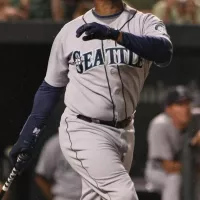
Ken Griffey Jr nicknamed Junior and the Kid is a...

Seattle is the most populous city in Washington state and...
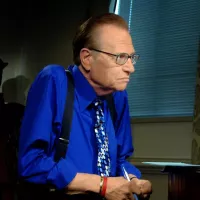
Larry King was a celebrated American author radio and television...
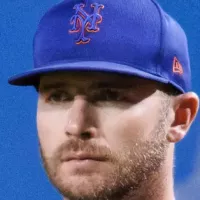
Peter Pete Alonso nicknamed Polar Bear is a professional baseball...
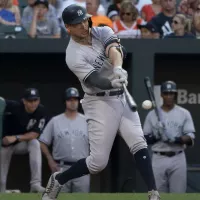
Giancarlo Stanton is a professional baseball designated hitter and outfielder...
Trending
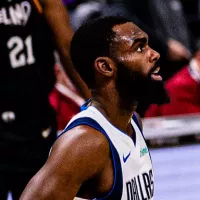
8 months ago Tim Hardaway Jr. aims to continue father's playoff success, reflecting on impressive NBA career.
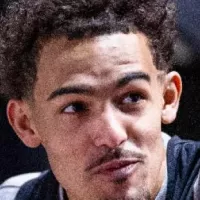
7 months ago Trae Young Trolls Knicks Fans During NBA Playoffs: A Playful Jab.

3 months ago Jonas Brothers Return to Sacramento; Joe Jonas's In-N-Out Order; AJ Michalka on Joe
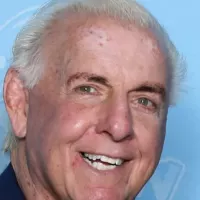
8 months ago Ric Flair Predicts Cena's Title Win, Cena Nears Flair's Record, WWE Recognition Explained.
The Lakers Suns rivalry is a long-standing NBA competition marked by intense playoff matchups Beginning in the Lakers dominated the...
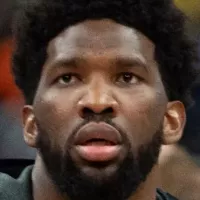
Joel Embiid a Cameroonian-American professional basketball player for the Philadelphia ers is a dominant force in the NBA Drafted third...
Popular

Tucker Carlson is an American conservative political commentator known for...

Candace Owens is an American conservative political commentator and author...

XXXTentacion born Jahseh Dwayne Ricardo Onfroy was a controversial yet...

Ben Shapiro is a prominent American conservative political commentator media...

William Franklin Graham III commonly known as Franklin Graham is...
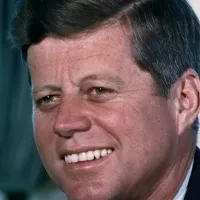
John F Kennedy JFK was the th U S President...
